I was in London recently and my sister Ger , arranged a guided tour of Buckingham Palace … the rumbling sound you hear now is my Father’s spirit at the thought that anybody related to him would go anywhere near the Royal residence unless carrying an explosive device … the tour took four hours and was interesting just to see how they live but more interesting for me was the fact that at the end we got to walk a half a mile through the garden .
Not the Royal Family’s private gardens mind you just basically a walk inside the royal grounds along the lake to the gates , the area behind the Palace is absolutely huge , 40 acres , and you would think you were in the heart of the country side and I can imagine that the private gardens are top class but conservatively staid and formal going by the type of interior design , furniture , painting etc. we saw inside the Palace and indeed the expanse of grass at the back of Buckingham Palace is no great shakes and is just a big field basically and could have been anywhere really .
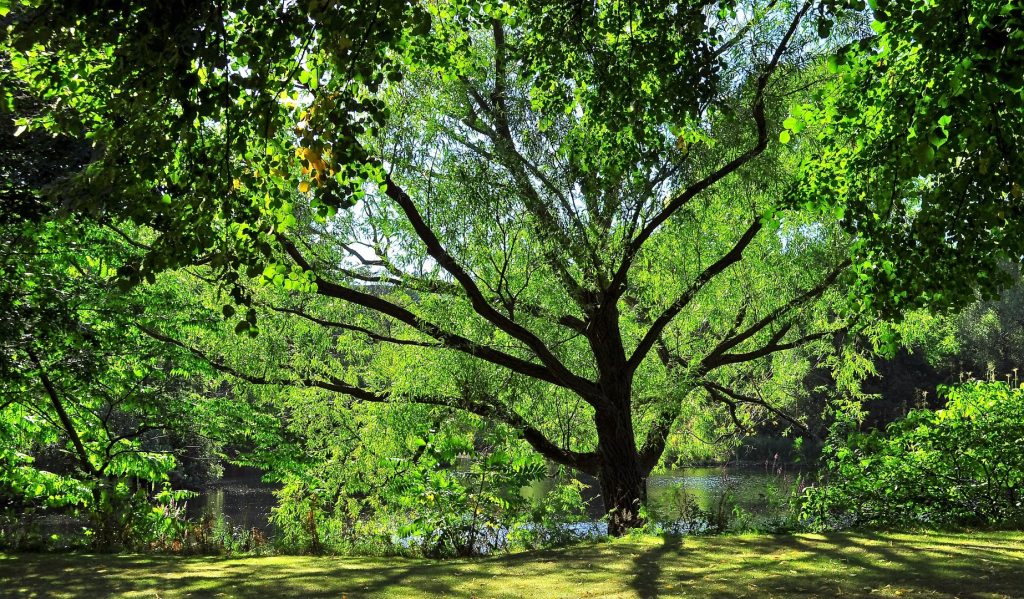
The lake at Buckingham Palace August 2016
Last week I tackled the large wetland wild flower bed and it took me three hours to haul out a plant that has taken hold here in all the wet areas , a weed really with lovely blue flowers carried on stems nearly a metre and a half high but it dies ugly and looks awful unless cleared out and like all weeds it struggles to propagate itself by millions of seeds that spray out as you rip it out of the ground … difficult to eradicate but I will spray the vacant ground with round up in a week or two in an effort to control next years crop .
It may sound like a contradiction to be removing a large amount of plants and seedlings from a wild flower area however it is all about diversity of planting and allowing room for other plants to thrive and colonise as this particular wild flower is swamping all other growth and taking over the entire area where I am trying to establish clumps of gunnera , rodgersia , iris and bull rush and this hopefully will allow a more balanced planting palette and of course what the books or gardening gurus don’t tell you is that a wild flower area after flowering is over in late August looks a total mess .. which is why I try and grow some architectural plants throughout to give some interest and prolong the look … if you allow a wild garden look which is only cut down twice a year then my view is keep it in out of the way areas not front line so that it can die in peace and not in full view .
I always emphasise to visitors that cleaning a bed before planting is absolutely vital especially if you are trying to establish a canopy of ground cover plants because once planted you cannot chop away at it with a hoe and really need to go hands and knees periodically to weed it especially in the first two years while the planting is getting established and after that the canopy will generally drown out the light and prevent weed seedlings germinating . My best ground cover plants here are geranium and alchemis mollis and as I say once established they are effective at keeping out weeds … the geranium I use most is from Croatia and is called Biokovo and it slips very easily as any offset will root in a week or so and I grow them on in pots filled with John Innes potting compost and plant them out in their intended location after six weeks or so while with the Alchemis Mollis this self seeds everywhere and I just lift the plantlet and transfer immediately to it’s new location .
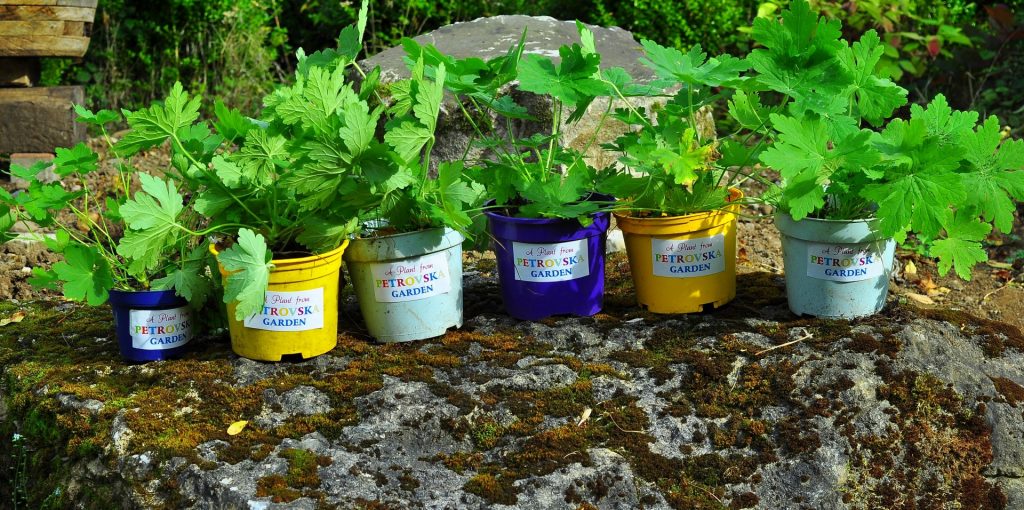
Six week old Geranium Biokovo cuttings ready for planting September 29th 2016
The beauty about taking off shoots or cuttings from Alchemis Mollis also known as Lady’s Mantle and geranium is that you can lift them at any time of the year and they don’t seem to mind and will take unlike most plants where there is a proper season for them so you can’t take them whenever you feel like it or are in a mood for a spot of propagating which can be a pain as gardening should be spontaneous and both these plants have the added advantage that they are evergreen so they are really effective ground cover and will cover an area within a year and all that is needed then is to plant dwarf daffodils between the clumps for spring colour with the added advantage that the dying daff foliage is quickly hidden so a win win situation .
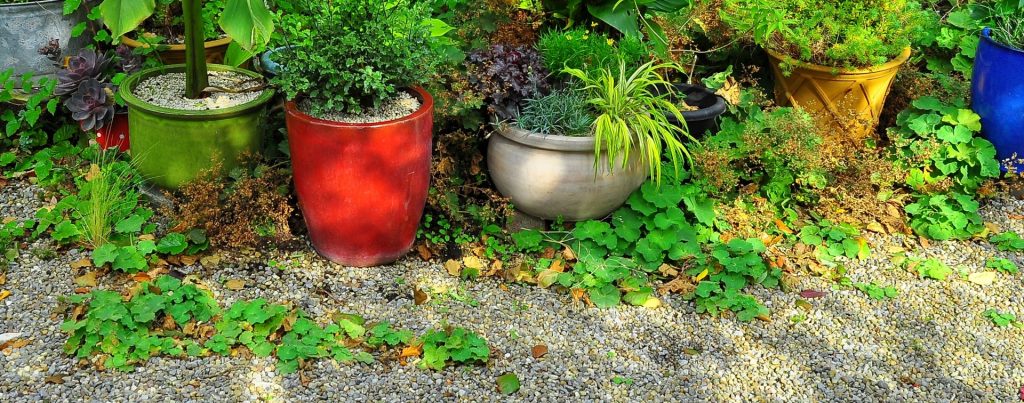
Alchemis Mollis self seeding in the gravel garden September 28th 2016
I have only once seen a proper wild flower meadow and that was planted by a friend who spent a lot of money with a landscaper to till the ground then plant with a proper wild seed mix of poppies , yellow rattle , meadow sweet etc. and it flowered beautifully the first Spring but in the following year it had lost half it’s wild flowers and was overgrown with thistles and dandelion and nothing the third year .
For a wild meadow to thrive it needs poor barren soil to start with as any type of wet lush growth will swamp it with deep rooted weeds and there is no such thing as a wild flower area that flowers continuously through Spring and Summer and generally after one flowering it ends up looking like a dogs dinner for the rest of the year .
My personal theory is that the current vogue for wild flower areas is that most of them are parts of the garden over run with weeds that the owner can’t be arsed to tackle … far easier to call it a “ wild flower ” area and I did that myself here with large areas of bramble that I used to say were a haven for wild life rabbits , pheasants etc. until I buckled down to the horrible job of clearing them !!
I have been trying to grow three quince trees for the past eight years and I have wanted to grow these since I first read about them in Robin Lane Fox’s book “ Better Gardening ” thirty years ago but they were not available for sale in Ireland at that time being considered “tender ” so when I started planting here in 2008 imagine my delight when I saw them for sale in Clonmel Garden Centre and especially that it was the Yugoslav variety , Vranja , which Lane Fox had said were the best . For the first few years they grew beautifully into strong trees but no fruit and then they were hit in June that year with a leaf blight that disfigured all the leaves and left the trees looking sick from July on … this happened each year in early summer , I researched the blight and asked every gardener about a cure for it until this June when it was suggested that perhaps the reason was that the variety Vranja was just not suitable for Irish conditions so finally this week as a last resort I dug up the weaker looking of the trees and cut the others down to two metres in the hope that the new growth next year might be OK … we live in hope !
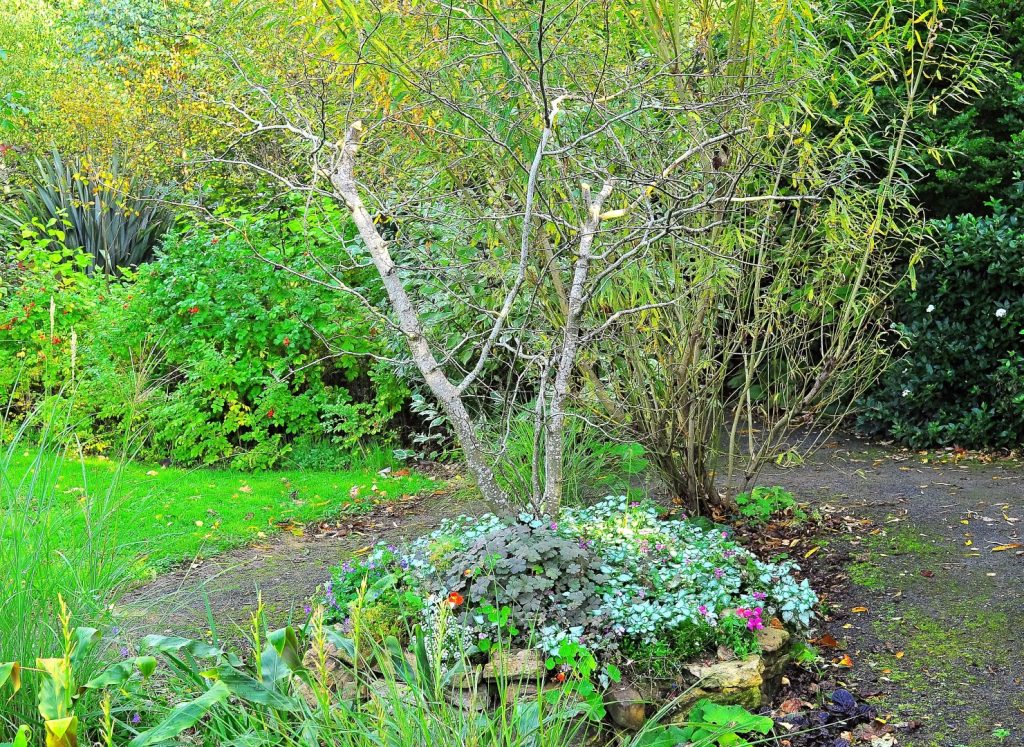
Last chance for the Quince trees to get rid of the leaf blight September 27th 2016
Helen Dillon , the garden writer and the most well known gardener in Ireland has sold her house in Dublin and her famous garden is no longer open to the public as at 78 she announced she is down sizing and moving to a smaller house and garden . Helen has had a great send off in the international media since it was announced in April that the house was on the market and she kept the garden open until September , she has been featured in articles all over the UK and Ireland since her decision to move from the garden and in the past six months all the major national Irish newspapers have featured her decision together with the Guardian and London Times and last week in the ultimate accolade Monty Don interviewed her for Gardener’s World during which she referred to Monty as “ you silly boy ” !
Helen is a great writer on gardening and I have all her books and collected articles but most of all she is famous for the decision she took in 2000 to dig out her lawn , the central feature of her garden and replace it with a long water pool and to this day this single decision is still discussed with gardeners lined up in two camps , those for it and those who hate it … Helen would have done this out of conviction that the garden was jaded and needed a lift but whatever her motive it was a master PR stroke as it catapulted the garden into a huge talking point these past sixteen years .
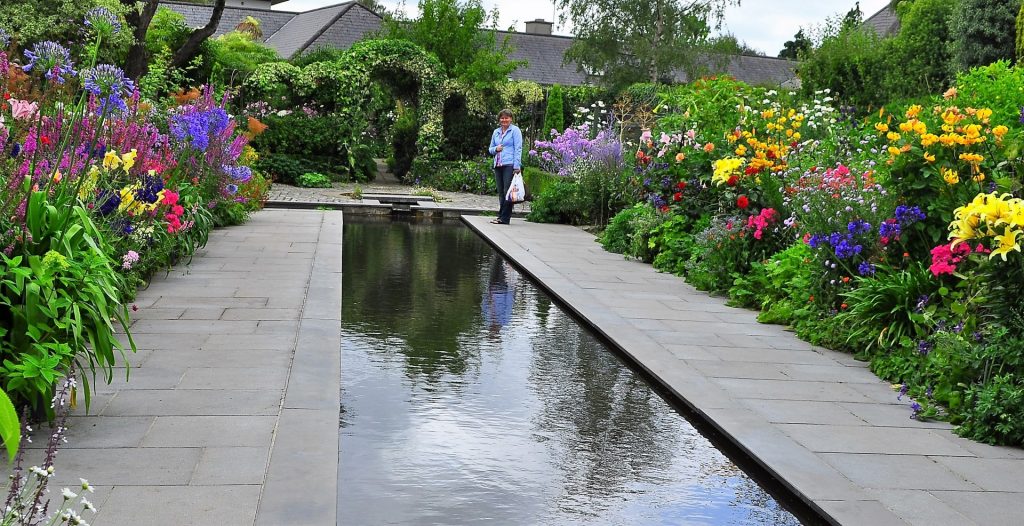
Snezana on a visit to Helen Dillon’s Garden August 2014
I first met Helen Dillon two years ago when Snezana and I visited her garden in Dublin , I had been warned that she could be moody and might or might not talk to you but we found her to be the opposite and she couldn’t have been more open or welcoming indeed to the extent that when I admired the giant tetroplanax rex in her borders that she went inside and came out with a spade and told me to dig out a few self seeded rex’s ! The garden although large by city standards was small for such a famous garden , a half acre at most but virtually every inch is planted and Helen is famous for growing masses of plants in containers and moving them in and out of the borders during flowering and she first came up with the idea of using steel dustbins as containers which she used to great effect with cannas and agapanthus … she told me her secret of getting such huge growth in the containers , daily feeding with liquid growmore .
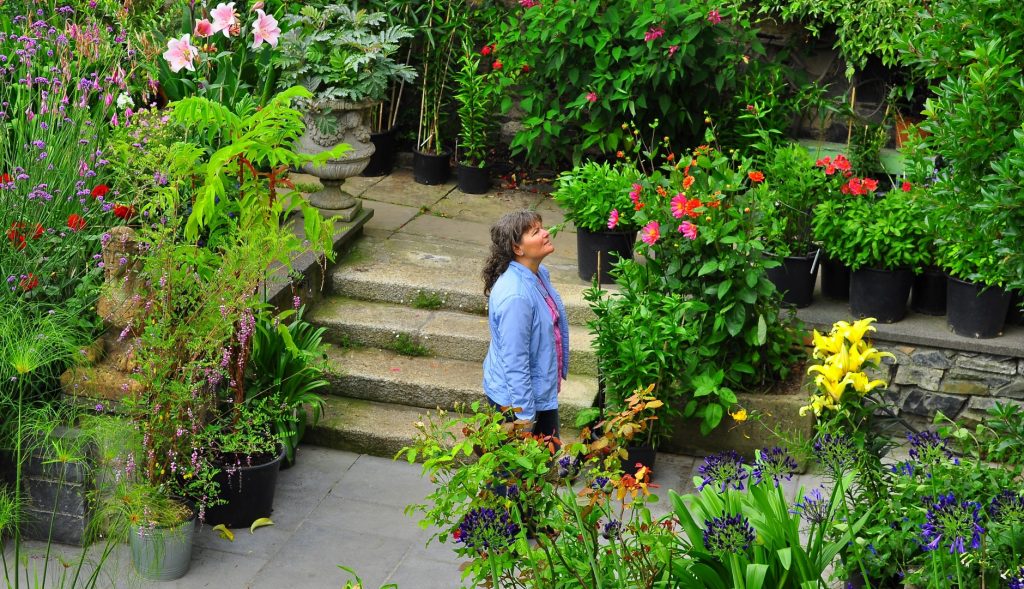
Pots and containers at the Dillon Garden August 2014
Afterwards I met her several times at lectures she gave and at one three day garden event in Kelly’s Hotel , Rosslare where she was the guest lecturer both Snezana and I were able to get to know her better … a great gardener and I wish her well with the move to a smaller garden which she is busy making plans for already …. gardeners don’t retire , we move to smaller patches !
Snezana on a recent visit to the Garden here on leave from the OSCE Mission in Eastern Ukraine .

Gardener at work September 7th 2016
The job I enjoyed most when working in the Balkans was when I was seconded by the EU to the Brcko District in North Eastern Bosnia in September 1998 as Customs Advisor to the US State Department who were trying to kick start the economy after the war years and allow the refugees return to their homes after ethnic cleansing and this was under the leadership of the US Ambassador , Bill Farrand in what became known as the Brcko Arbitration Award arising from the Dayton Peace Agreement that ended the Bosnian War of 1992 to 1995 … I spent eight years in Brcko working on this project , the first three years in almost daily contact with Ambassador Farrand before his retirement … Bill’s friendship and mentoring helped me enormously in those early years in Brcko .
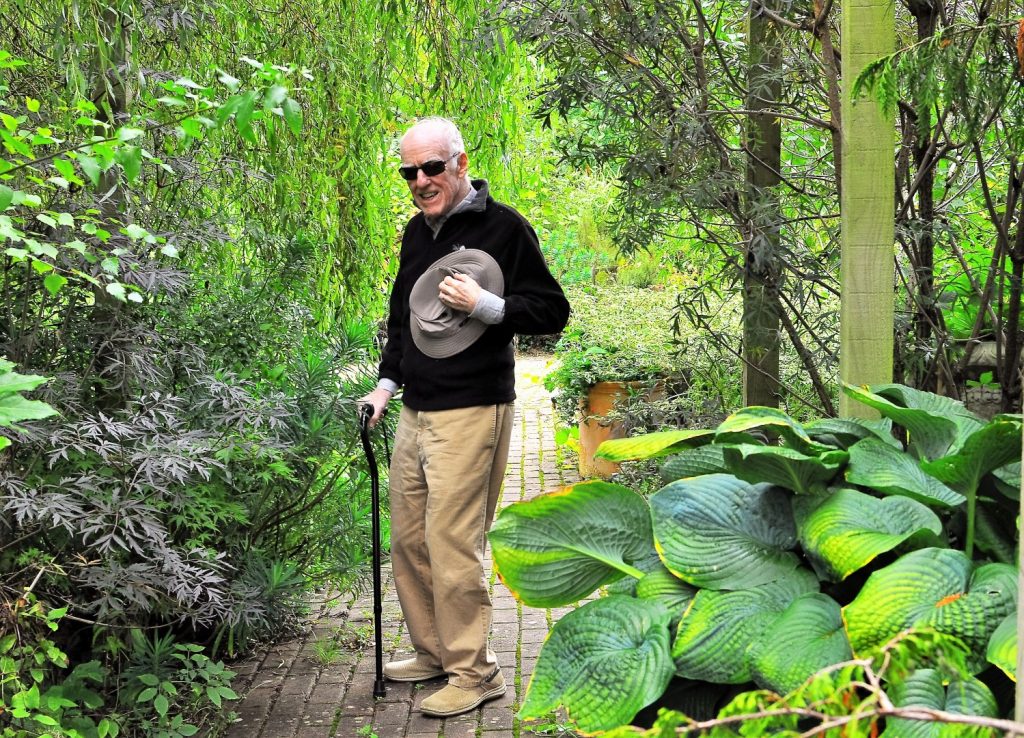
Bill Farrand at Petrovska Garden September 2016
Bill has Irish roots and came to Ireland last week with his wife , Pam and sisters , Beth and Nancy and I was delighted to host him for a few days in Clonmel where we relived the Brcko experience !
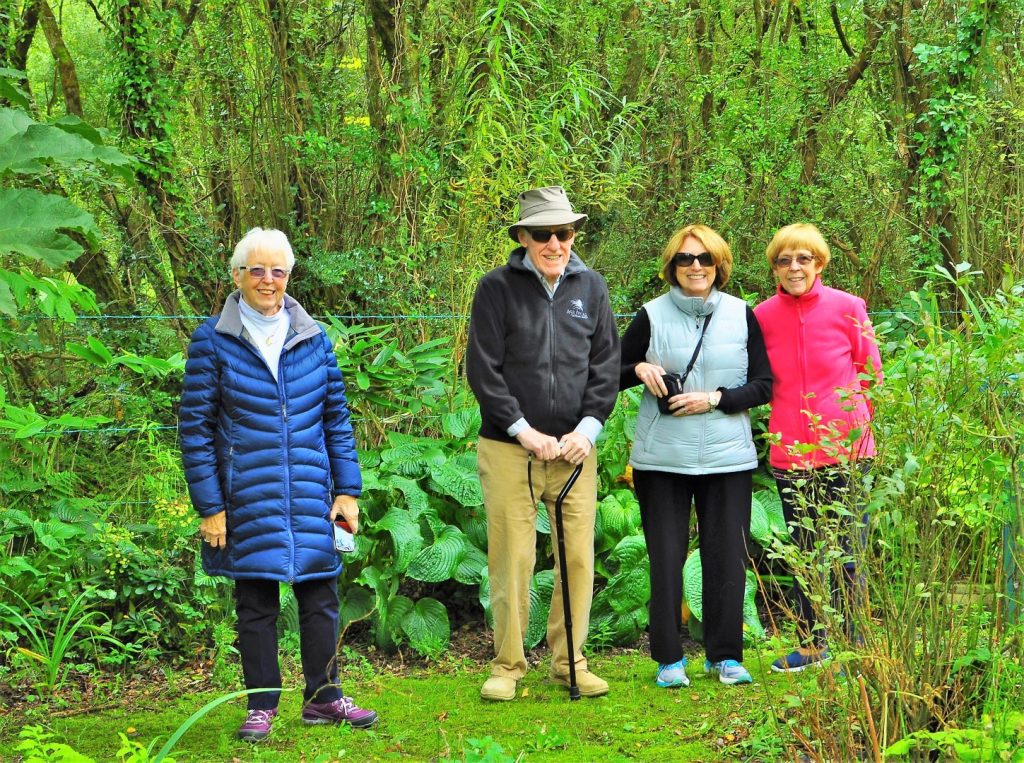
Nancy , Bill and Pam Farrand , Beth at the stream September 2016
Late September colour in the Garden
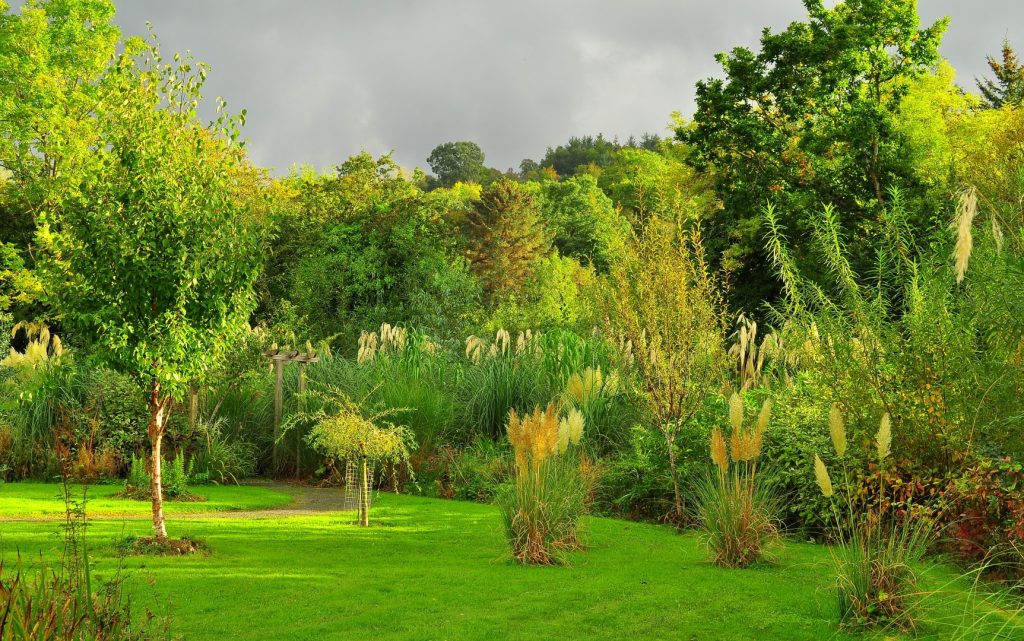
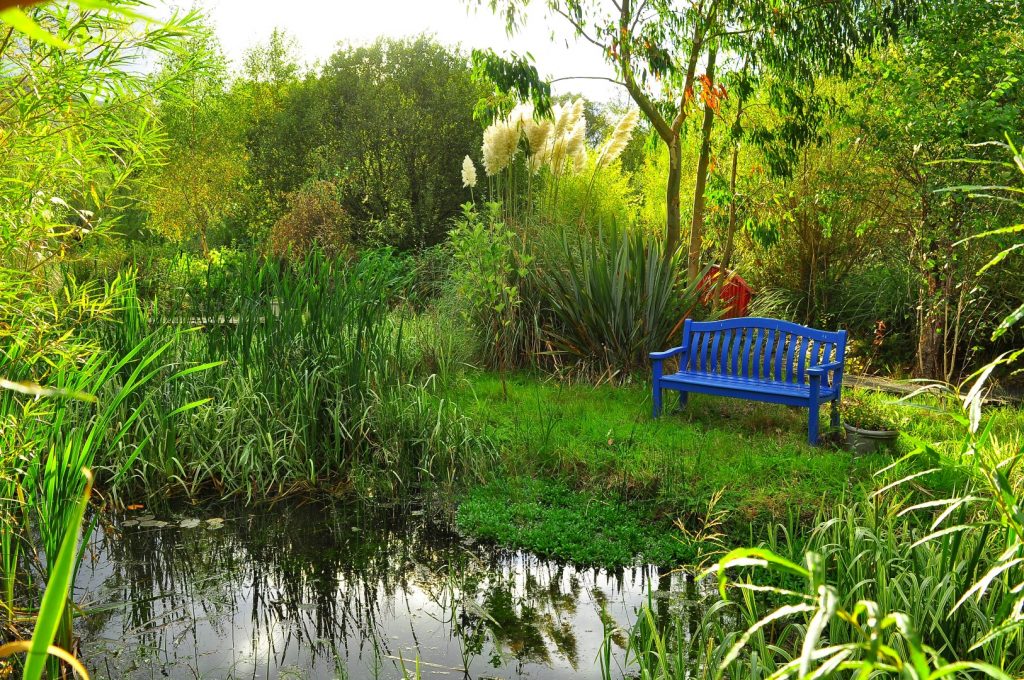
The Water Garden just before sunset September 30th 2016


Leave a Reply